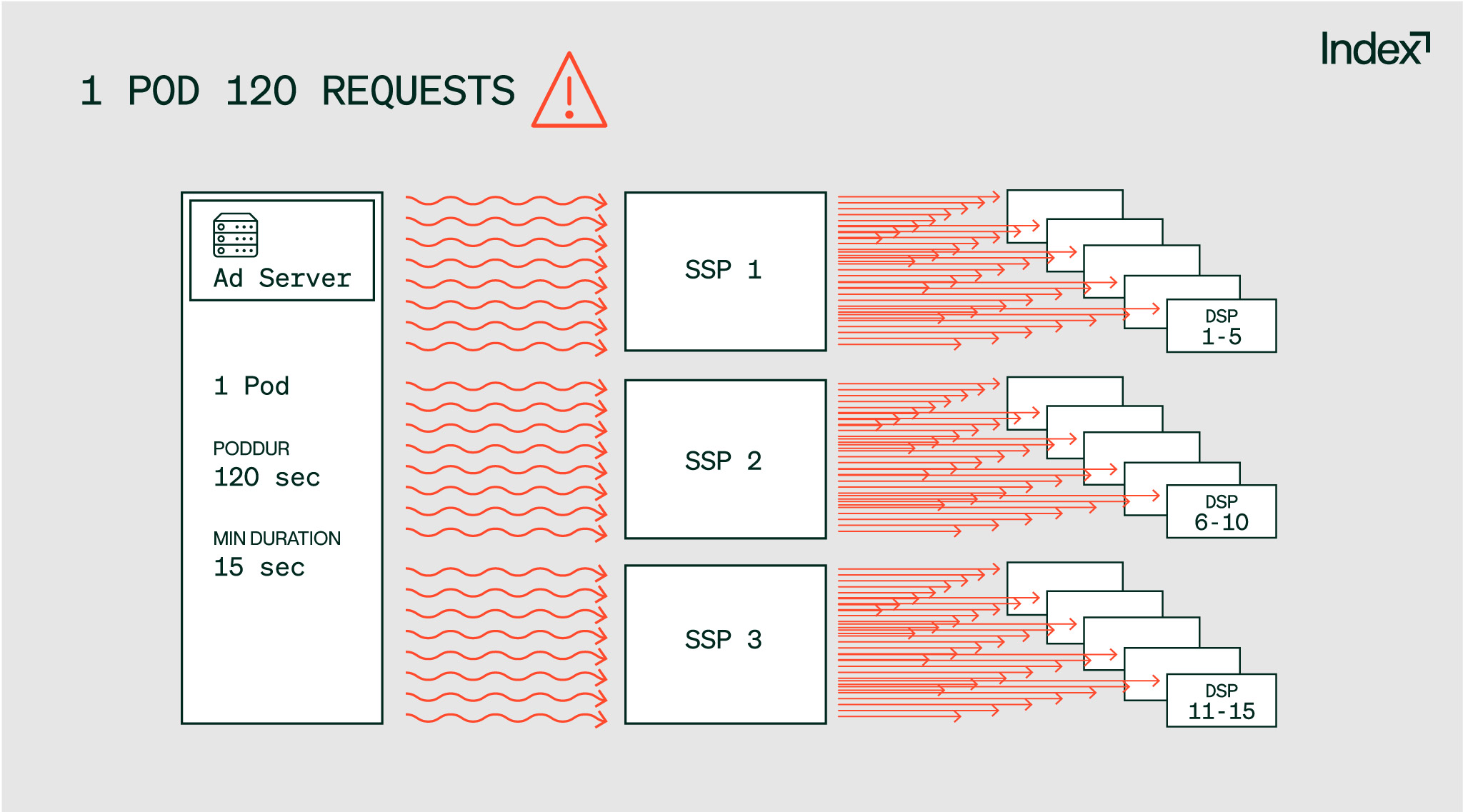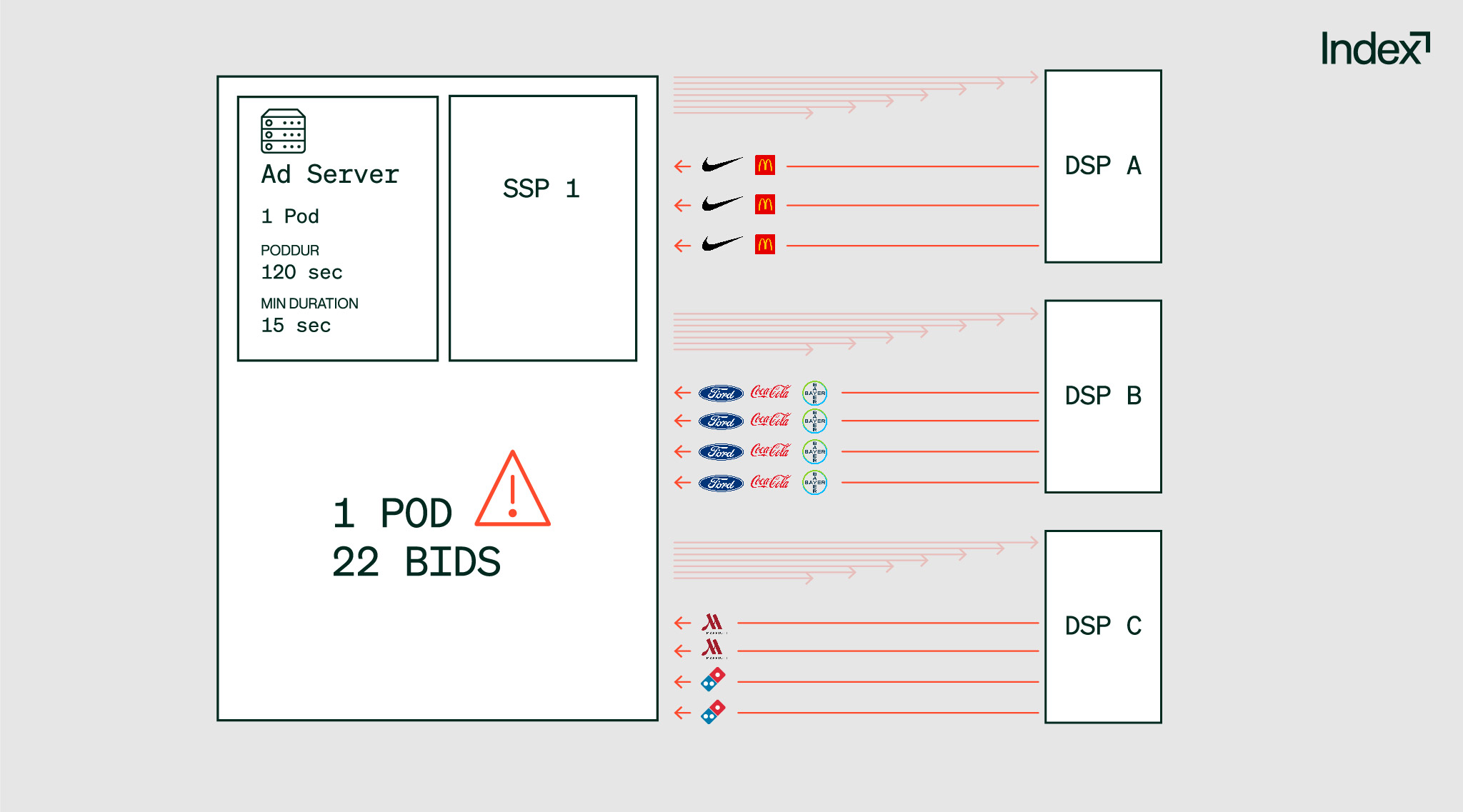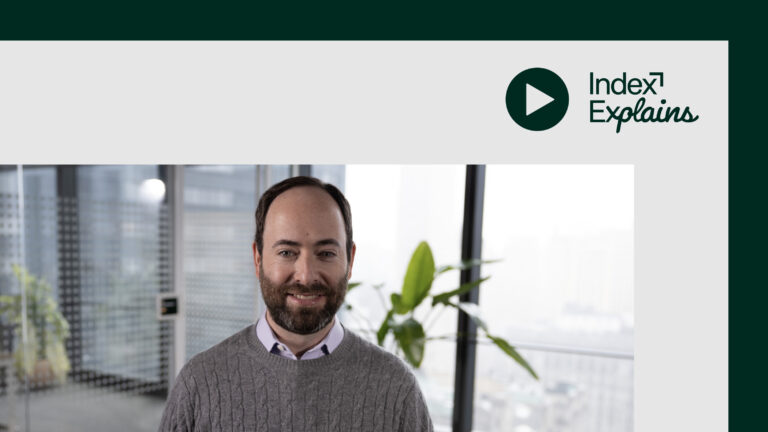Reducing digital advertising’s carbon footprint
While the ad industry’s carbon footprint is considerable, the good news is that many companies have begun to increase their investment in sustainability initiatives to work toward the goal of net zero emissions.
As you may remember from our other videos in this series, the ad podding features introduced with OpenRTB 2.6 provide many benefits to media owners, buyers, and TV viewers. By bringing more efficiency to programmatic transactions in streaming TV, ad podding improves sustainability and drives down the carbon footprint.
Think about it at a high level. Ad pods are groups of ad slots in a commercial break. For example, a 120-second ad pod would contain several 15-, 30-, 60-, or 90-second ad slots. Before OpenRTB 2.6 introduced pod bidding, media owners and buyers had to transact each ad slot individually. Now, we can take all of those opportunities and group them within a single ad pod in a single bid request.
Ad podding brings more efficiency to programmatic
You can imagine how significantly the shift to ad podding would reduce transaction volumes, but let’s put it into perspective. It’s Thursday evening, you’re watching your favourite TV show on your smart TV app, and the first ad break is about to come up.
Let’s first look at the flow when there is no ad podding support in the supply chain.
- The ad server looks at the total ad break duration—let’s say 120 seconds—then generates eight individual bid requests with a minimum duration of 15 seconds.
- The ad server sends these bid requests to the three SSPs it’s integrated with. We now have 24 calls for the one single ad break.
- Each of the SSPs then routes these requests to the five DSPs they’re integrated with. The 24 calls from the three SSPs go out to five DSPs, for a total of 120 bid requests.

So now, one single 120-second ad pod for one single viewer has turned into 120 bid requests—each of which require processing power and contribute carbon emissions to the environment. Plus, each request contains duplicate data, such as identifiers, app bundle information, and more, which means using more energy to send considerably more data.
What if everyone in the ecosystem adopted OpenRTB 2.6 and supported ad podding?
Let’s walk through the same scenario to see how ad podding improves sustainability.
- The ad server presents a 120-second ad break as one opportunity in one podded request and sends it to each of the three SSPs.
- The three SSPs in turn send one single podded request to their five DSP partners. We now have just 15 bid requests produced from the one ad break for one single viewer.

That’s a significant reduction, especially when you consider several ad breaks per show scaled across millions of viewers and numerous TV shows.
But you haven’t been shown an ad yet—we still have to consider the return flow.
For simplification, let’s assume one ad server, one SSP, and three DSPs, and assume each DSP has different bid response rates.
To avoid ad duplication and deliver a positive viewer experience, each brand and creative shouldn’t appear more than once in the pod. After all, no one wants to watch the same commercial back to back.
- Without ad podding, the DSPs will consider all eight of the original bid requests independently since they don’t know they belong to the same pod. This means they’ll bid back with the same set of bids repeatedly.
For instance, DSP A could return bids for say, McDonald’s and Nike, repeatedly in three responses. DSP B could return bids for Bayer, Coke, and Ford in four responses. And, DSP C could return bids for Marriott and Domino’s across four responses. - The SSP receiving these bids back from DSPs also has no idea that the eight original bid requests belong to one ad pod. This means it will aggregate and auction the bids independently.
The SSP or the ad server now has to process 22 bids with possible VAST unwrapping and remove the duplicates to get the seven unique bids considered for the pod.

Let’s again consider a scenario where everyone in the ecosystem supports ad podding.
In a scenario where all parties support OpenRTB 2.6 and ad podding, each DSP would receive one podded request presenting all ad opportunities and can bid back accordingly.
In this case, DSP A would return McDonald’s and Nike bids just once, and may also add bids from P&G and LG for the one pod. DSP B would return bids for Bayer, Coke, and Ford without any duplication, and DSP C would return bids from Marriott and Domino’s just once.
Between the SSP and ad server, we’re now dealing with just nine unique bids, saving the wasteful computational power of duplicated bids.

Ad podding improves sustainability
While there are many factors that dictate the scale to which we can reduce the advertising industry’s carbon footprint, we can clearly see the significant role ad podding plays. Just in our examples above, ad podding would reduce the outgoing bid requests by 88%, and the returned bids by 59%.
By eliminating the need for all parties to deal with duplicative requests, bids, and creatives, we can improve efficiency and reduce emissions.
To do so, we need everyone across the industry to adopt OpenRTB 2.6 and support ad podding. If you’re ready to get started and need support, please don’t hesitate to get in touch. Our team’s here to help.











